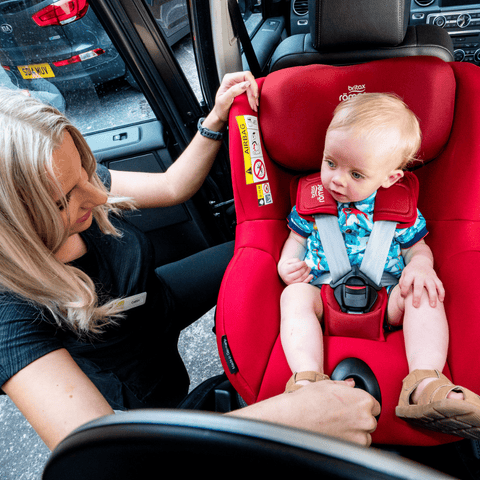Why Extended Rear-Facing Car Seats Are Essential for Your Child's Safety
Extended rear-facing car seats are not a new concept, but their importance has become increasingly recognized in recent years. At In Car Safety Centre, we've been advocating for and supplying rear-facing car seats since the 1980s, aligning with best practices for child safety in vehicles.
What is ECE R129 and How Does it Impact Child Car Seat Safety?
The introduction of the ECE R129 regulation in 2013 marked a significant advancement in child car seat safety standards across Europe. This regulation mandates that infants must be transported in a rear-facing car seat until they are at least 15 months old, a notable improvement over the older ECE R44 regulation, which allowed forward-facing seats from 9kg.
While this is a positive step, the question remains: is 15 months enough? The safety evidence suggests otherwise.
The Swedish Model: Rear-Facing Until Age 6
Sweden has been a pioneer in child car safety since 1965, when they first began advocating for rear-facing car seats. Swedish parents routinely keep their children rear-facing until they reach 18kg, approximately 4 years of age, and often up to 25kg, or around 6 years of age. This approach is rooted in the understanding that a child's anatomy is not as developed as an adult's, making them more vulnerable in a car crash.
Why Rear-Facing is Safer
A child’s body differs significantly from that of an adult. Their head can be up to four times heavier relative to their body, and their neck and back muscles are not fully developed. In a forward-facing car seat, a head-on collision can cause the child's head to be thrown forward with great force, leading to severe injuries to the neck and spine.
In contrast, a rear-facing car seat supports the head, neck, and spine, distributing the forces of a collision across the entire back of the seat. This reduces the risk of injury substantially. Considering that head-on collisions account for approximately 47% of all crashes, this protection is crucial.
Misconceptions About Rear-End Collisions
Some parents may worry about the effects of rear-end collisions on a child in a rear-facing seat. However, it's important to understand that in a rear-end collision, both vehicles are typically moving in the same direction, resulting in less severe deceleration compared to a head-on collision. The forces involved are significantly lower, meaning the strain on the child's neck and spine is reduced.
Choosing the Right Extended Rear-Facing Seat
At In Car Safety Centre, we offer an extensive range of extended rear-facing car seats designed to suit children up to 25kg. These seats grow with your child, ensuring they remain safe and comfortable as they develop.
Our team of experts is always available to assist you in finding the perfect seat for your child's needs. Whether you're unsure about the best model or have specific questions about installation, we're here to help.
Contact Us for Expert Advice
Investing in an extended rear-facing car seat is one of the best decisions you can make for your child's safety. For more information or personalized advice, don't hesitate to reach out to our knowledgeable team at In Car Safety Centre. We're committed to helping you keep your child safe on the road.







Comments (0)
There are no comments for this article. Be the first one to leave a message!